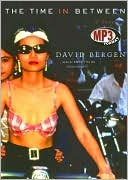

 |

|

The average rating for The Time in Between based on 2 reviews is 2.5 stars.
Review # 1 was written on 2014-01-31 00:00:00 Paul Lemieux Paul LemieuxJust a few notes here before this book evaporates into the ether on me; which is not an indictment of its quality (more, my own poor literary memory. Hence the need for these notes.) Also, there are not enough reviews, nor readers, for this novel. It really deserves a wider audience. David Bergen, a Canadian writer, won the Giller for this in 2005 and another of his - The Age of Hope - was a finalist in Canada Reads 2013. I had never read him before. The Time In Between focuses on a U.S. veteran who returns to Vietnam to exorcise the demons that have plagued him since his time there 30 years before, and who is followed there by two of his three now-adult children. The novel chronicles a family's experience of trauma and vicarious trauma, and their attempts to revisit the past, physically and in memory, as a means to recover from it. That, in itself, is enough to keep one reading, but Bergen does a couple of other things that are truly extraordinary and which *almost* push this into five-star territory for me. First, he writes with a concision that has been likened to Raymond Carver (whom I've not read) but that I would call Hemingway-esque. There is a deceptive simplicity to his sentences; on the surface, they are sparse and plain, but they reflect exquisite, minutely-observed, and perfectly-chosen details - as simple and stark, but as high-impact, as a fly in one's soup. The thinness of an ankle emerging from a too-short pant leg. A glimpse of a woman asleep in a storefront seen by a cyclist. A mangy dog, limping in an alleyway. There are actually three soldiers whose stories are woven together here: Charles, the father and U.S. veteran; a North Vietnamese soldier, who is a character in a book Charles is reading (that book based on a real one, The Sorrow of War); and an artist named Hoang Vu, whom Charles and later his daughter Ada meet and who was also a survivor of (and soldier in) the war. Each of these stories and characters have commonalities and are interlinked. There are also Charles' son, Jon, and his daughter, Ada, plus a host of other minor characters, all of whom are essential to the plot. Everything counts in this novel. There's not a line, not a character, not a detail that doesn't matter. There is something about the complexity of story (stories) and the starkness of the language in which they are told that sets up a vibrating thrum, low level but intense, that lasts and propels this thing forward to its several, inevitable conclusions. Some more things: stories are critical. Telling one's story can both save and destroy one, but regardless of how painful or what the story does, the telling is necessary. There is a motif around safety: characters repeatedly say they feel safe, or will keep something safe. The motif resonates both with its opposite, threat and destruction; and with the idea of secrecy - secret acts, betrayals, and shame. There are horrible scenes of brutality against animals. Anyone reading this who knows me knows that violence towards animals used gratuitously, for manipulation or for mere shock value, will cause me to abandon a book and judge it harshly indeed. As hard as these scenes were for me to read, they are important here. They create an atmosphere and illustrate a general level of violence against human beings that is almost worse for not being described. Finally, I read a lot of war lit, and am specifically interested in the war in Vietnam and that time in U.S. history. I would consider myself fairly well-read in the literature that has emerged from it. This book comes at that war from a slightly different angle: while it is concerned with the direct experiences of those who lived it, these are re-told as reminiscences or told indirectly by a generation many years removed from the events. Despite that, or perhaps because of it - and although none of the details shocked or surprised me - the story of the war and its effects retain an immediacy, a sledge-hammer present-tense. As traumatic memories do. It reminded me what a bloody awful war this was (as they all are, I suppose; although Vietnam feels worse somehow), and how far-ranging its impact continues to be. As such, The Time In Between is an important work to include in fiction about the Vietnam war. It reminds us what an incredibly brutal, soul-destroying impact that war had on those who lived it, and on those who have been living with it in the time between then and now. |
Review # 2 was written on 2011-02-19 00:00:00 Olver Capponcelli Olver CapponcelliI'm trying very hard to find something positive to say about The Time in Between , but not much is leaping to mind. It wasn't the worst book ever, it was engrossing and easy to read, but having finished I don't feel that usual sense of gladness that I read it. The main story of the book, or so I thought, is resolved halfway through. After that it's as though the characters just didn't want to leave. They interact with other people, sometimes in significant ways, and yet don't seem to grow or develop - it's just flat and rather meaningless. The language throughout is simple and unembellished, which makes the book a quick read and draws a thorough but rather unemotional picture of time and place. Perhaps my biggest difficulty with the book was in finding the characters' motives. I never really figured out why any of them did the things they did, big or small, and overall I found the book left me very unsatisfied. |
CAN'T FIND WHAT YOU'RE LOOKING FOR? CLICK HERE!!!